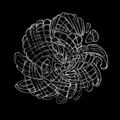Template:Selected anniversaries/September 24: Difference between revisions
No edit summary |
No edit summary |
||
| Line 63: | Line 63: | ||
||1911: His Majesty's Airship No. 1, Britain's first rigid airship, is wrecked by strong winds before her maiden flight at Barrow-in-Furness. | ||1911: His Majesty's Airship No. 1, Britain's first rigid airship, is wrecked by strong winds before her maiden flight at Barrow-in-Furness. | ||
||1913: Astronomer and academic Lawrence Hugh Aller born. His work concentrated on the chemical composition of stars and nebulae. He was one of the first astronomers to argue that some differences in stellar and nebular spectra were caused by differences in their chemical composition. Pic search: https://www.google.com/search?q=Lawrence+Hugh+Aller | |||
||1916: Theodore Puck born ... geneticist. Puck was an early pioneer of "somatic cell genetics" and single-cell plating ( i.e. "cloning" .) This work allowed the genetics of human and other mammalian cells to be studied in detail. Also, Puck's team found that humans had 46 chromosomes rather than 48 which had earlier been believed. Pic search yes: https://www.google.com/search?q=Theodore+Puck+geneticist&oq=Theodore+Puck+geneticist | ||1916: Theodore Puck born ... geneticist. Puck was an early pioneer of "somatic cell genetics" and single-cell plating ( i.e. "cloning" .) This work allowed the genetics of human and other mammalian cells to be studied in detail. Also, Puck's team found that humans had 46 chromosomes rather than 48 which had earlier been believed. Pic search yes: https://www.google.com/search?q=Theodore+Puck+geneticist&oq=Theodore+Puck+geneticist | ||
Revision as of 05:19, 19 November 2019
1054: Composer, mathematician, and astronomer Hermann of Reichenau dies. He wrote a treatise on the science of music, several works on geometry and arithmetic, and astronomical treatises (including instructions for the construction of an astrolabe, at the time a very novel device in Western Europe).
1501: Gerolamo Cardano born. He will be one of the most influential mathematicians of the Renaissance.
1624: Renaissance-era mechanical soldier Clock Head uses Gnomon algorithm functions to fight crimes against mathematical constants.
1625: Mathematician and politician Johan de Witt born. He will derive the basic properties of quadratic forms, an important step in the field of linear algebra.
1769: Polymath and crime-fighter Johann Heinrich Lambert discovers new type of Gnomon algorithm functions which convert map projections into optical projections. These projections will quickly find applications in scrying engine technology.
1934: Writer and peace activist John Brunner born.
1937: Alice Beta Paragliding published. Many experts believe that the illustration depicts Beta infiltrating the ENIAC program.
1938: Mathematician Lev Schnirelmann dies. He proved that any natural number greater than 1 can be written as the sum of not more than C prime numbers, where C is an effectively computable constant.
1999: Writer, editor, and actor George Plimpton publishes his account of personally committing math crimes "for the participatory journalistic experience."
2016: Spiral 2 voted Picture of the day by the citizens of New Minneapolis, Canada.









